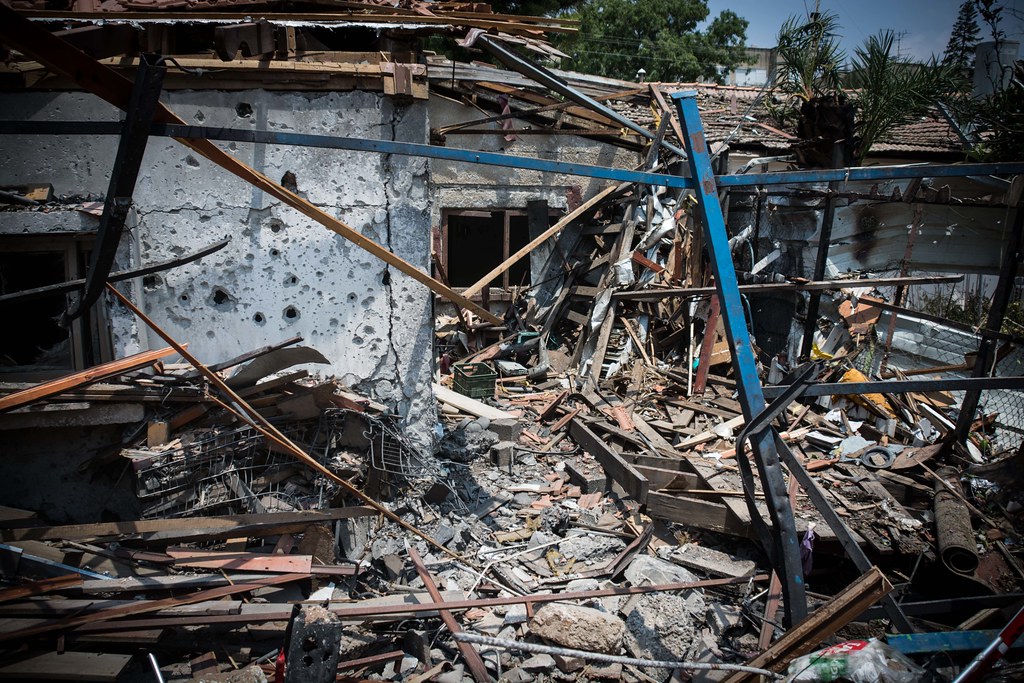BESA Center Perspectives Paper No. 2,030, May 14, 2021
EXECUTIVE SUMMARY: Israel must replace its containment policy vis-à-vis Hamas with a decisive strategy aimed at routing the Islamist terror group.
Ever since Hamas’s violent takeover of the Gaza Strip in 2007, Israel has sought to make the best of a bad situation. Military re-conquest was out of the question given the IDF’s withdrawal from the Strip two years earlier and Israel’s reluctance to reassume control of Gaza’s million-and-a-half residents. In these circumstances, allowing Hamas to run the daily lives of the local population while constraining its military buildup as much as possible was seen as the least of all evils. Not least since Hamas’s control of the Strip created a rival political entity to the PLO-dominated Palestinian Authority (PA) in the West Bank, thus reducing the Palestinian capacity to strategically damage Israel.
In practice, this policy created a complex and uncertain situation. On the one hand, it reduced the Strip’s explosive potential and enhanced the IDF’s ability to operate against Iran’s military entrenchment in Syria and its arms supplies to Hezbollah. On the other hand, it created chronic instability that manifested itself not only in Hamas’s continued buildup but in three wars with the terror organization (in 2008/9, 2012, and 2014). These confrontations, alongside other manifestations of Hamas violence (e.g., the clashes along the border fence, the incendiary balloons terror campaign), exposed the pitfalls of a strategy that contented itself with interim solutions rather than seek a clear-cut victory.
Nor did the ad hoc ceasefire agreements and/or the influx of Qatari money into Gaza fully achieve their goals as they failed to break the underlying logic of the cat-and-mouse game between Hamas and Israel. Hamas viewed these arrangements as a carte blanche for limited terror activities that would not undermine the general framework of the so-called “calm,” while Israel did not go all the way in relenting the “siege” around Gaza so as to prevent Hamas from becoming too powerful.
And so the parties slouched into the current war, which broke out not because of Jerusalem (which was at most a trigger if not a pretext) but because of Hamas’s deliberate decision to produce a massive show of force against the backdrop of two parallel developments:
- The pragmatic-utilitarian regional trend of the past decade that culminated in the marginalization of the Palestinian problem and the signing of normalization agreements between Israel and four Arab states.
- The changing geostrategic landscape to the detriment of Israel (and the Sunni Arab states), largely because of the Biden administration’s appeasing policy vis-à-vis Iran and its abandonment of America’s traditional Middle Eastern allies in general, and Israel’s partners to the Abraham Accords in particular.
The current conflagration thus presents Israel with a weighty dilemma: whether to sustain the strategy that produced extended periods of relative calm in the shadow of a chronic conflict, or to adopt a new strategy that strives for a decisive victory. This latter approach has been absent from the Israeli strategic-military discourse in recent decades (if not since the October 1973 war), replaced as it was by a “no victory” strategy that substituted air campaigns for ground incursion into Gaza while being keenly aware of the operational limitations of these campaigns. This approach was further reinforced by the ability of the Iron Dome anti-missile system to reduce Hamas’s ability to inflict massive damage, which lowered public pressure for a massive ground incursion into Gaza. As a result, all three Israel-Hamas wars ended inconclusively, in a strategic draw of sorts that left both belligerents in a “neither here nor there” situation.
In these circumstances, Israel doesn’t have the privilege of persevering in a middle-of-the-road strategy that doesn’t correspond to the spirit of the time and the regional winds of change. Rather it must adopt a strategy that sees the current war as an opportunity to reshape the rules of the game: not only vis-à-vis Hamas but also vis-à-vis other regional foes (Iran, Hezbollah, the Palestinian Authority, and extremist elements among Israel’s Arabs) as well as ostensible friends (such as the EU and the Biden administration, which is already espousing an “even-handed” approach).
This in turn means that the current fighting in Gaza must not end in yet another inconclusive outcome, but must rather produce a resounding victory that includes the dismantling of Hamas’s fighting capabilities and the creation of a harsh reality in the Strip. This will require a deep ground incursion into Gaza that might exact a substantial Israeli human cost – something that Israel sought to avoid in recent decades. Yet it will send a clear and unequivocal message to foes and friends alike regarding Israel’s tolerance limits, and especially regarding its red lines and the attendant costs of crossing them.
Dr. Doron Matza, a Research Associate at the BESA Center, has previously held senior positions in the Israeli intelligence system.


